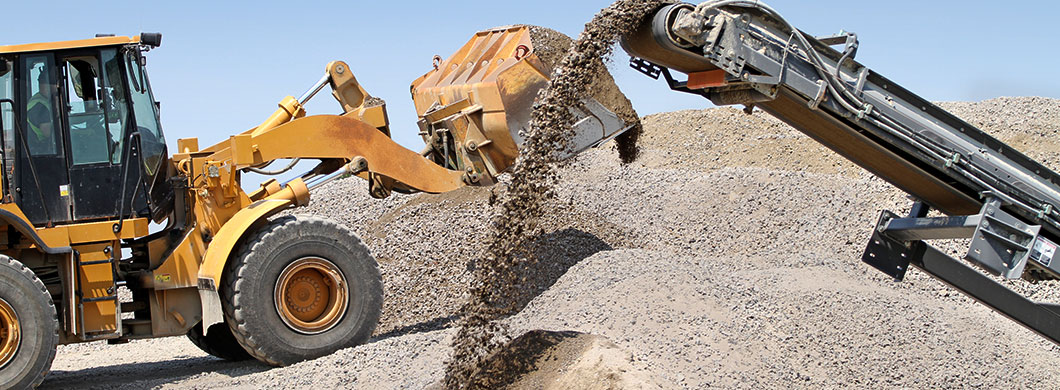All About the Concrete Hammer Test
Nov 05, 2019
The concrete hammer test is useful for determining a variety of concrete characteristics in a non-destructive way. With it, a technician can assess the uniformity and quality of the concrete based on standard specifications, compare the quality of concrete elements and establish a relative strength profile for a concrete structure. Each of these results can be determined using the same simple tool: a concrete test hammer.
How to Perform the Concrete Hammer Test
Performing a concrete hammer test is relatively simple. You simply hold the concrete test hammer (AKA, impact hammer or rebound hammer) of your choice against the concrete structure and release the spring-loaded hammer. Generally, the hammer tool will have a digital window and scale along the side where you can view the rebound value from the hammer's impact.Steps for Performing the Concrete Hammer Test
- Use a Schmidt hammer calibration anvil to check the calibration of your test hammer after every 1,000-2,000 impacts. You should also test your hammer prior to each use.
- Make sure the concrete surface you will be testing is smooth, clean and dry.
- If the surface is not smooth, use a concrete grinding stone to prepare it for the hammer test.
- Your chosen impact point should be at least 20mm away from the edge of the structure or any shape discontinuities.
- Take six rebound readings at each site and determine the average for a reliable value.
It's also important to keep in mind that the types of aggregate and cement used to create concrete can influence the results of a concrete hammer test. Therefore, you will need to evaluate the results of the test based on the specifications of the mixture. Age, curing and carbonation of concrete can also affect the rebound number determined by your test hammer.
Pros & Cons of the Concrete Hammer Test
Like any materials testing procedure, the concrete hammer test has its strengths and weaknesses, and it shouldn't be taken as an absolute measure of concrete's compressive strength.
Pros
- Use a Schmidt hammer calibration anvil to check the calibration of your test hammer after every 1,000-2,000 impacts. You should also test your hammer prior to each use.
- Make sure the concrete surface you will be testing is smooth, clean and dry.
- If the surface is not smooth, use a concrete grinding stone to prepare it for the hammer test.
- Your chosen impact point should be at least 20mm away from the edge of the structure or any shape discontinuities.
- Take six rebound readings at each site and determine the average for a reliable value.
Cons
- The results are based on a local point and aren't a complete indicator of concrete's compressive strength.
- Other flaws in the concrete's structure cannot be detected using only this test.
- The areas you test must be carefully selected and prepared.
When used within its capabilities, the concrete hammer test is easy to perform, reliable and applicable to any structure, since it isn't destructive.
When used within its capabilities, the concrete hammer test is easy to perform, reliable and applicable to any structure, since it isn't destructive.
A calibration anvil and a grinding stone are important to have on hand when preparing to perform the concrete hammer test. But, when it comes to the test itself, all you need is the hammer! There are a few main types of concrete test hammers to choose from:
- Schmidt Hammer Type N: Concrete test hammers are sometimes called Swiss Hammers or Schmidt Hammers, and this is where the name comes from. Schmidt Hammers can be used for a wide variety of non-destructive concrete tests. The Type N is ideal for concrete strengths ranging from 1,400-10,000psi.
- Schmidt NR Hammer: The NR Hammer is also ideal for concrete strengths ranging from 1,400-10,000psi. However, the NR has the added capability of automatically recording rebound numbers as a bar chart on a paper strip for quick and easy comparison. Each strip chart can log up to 4,000 impacts.
- Gilson Type N Hammer: The Gilson Type N can test concrete strength within the same range as the Schmidt Type N. This test hammer can also be used to estimate how much damage a concrete structure has taken due to freezing or fire. It also comes at a slightly lower price point.
Choose Your Concrete Hammer Test Equipment at Certified MTP
You can find all the concrete hammer test equipment needed for on-site structure testing at Certified Material Testing Products. We carry concrete rebound hammers in a variety of styles and price points, along with plenty of other concrete testing products. Get yours today.




